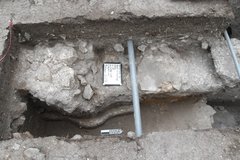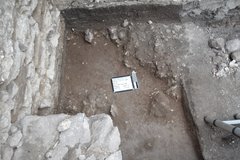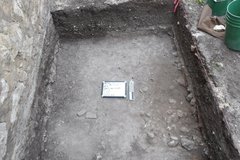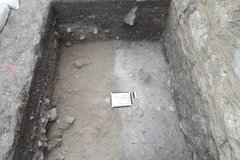Due to inclement weather, archaeologists only worked in the field three days during the week of February 26. Four excavation units were active during the week.
In EU-2B, archaeologists continued to delineate the limestone alignment that extends the length of the unit. The southern portion of the alignment has a slightly different construction than the originally exposed northern portion. The segment of the feature within EU-2B is comprised of larger limestone and extends deeper. There was also a portion of a prepared surface towards the base of the feature at approximately 100 cm below surface.
Archaeologists in EU-6 have reached the terminal depth, approximately 150 cm below surface. Hardpan extends across the base of the unit. The soil is a culturally sterile sediment that is present at a similar depth in all previously excavated units.






